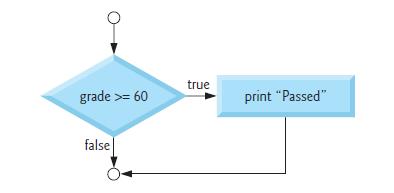- Introduction to C Programming
- Features And Importance
- Standard Library
- Programming in C
- Data Types
- Variables
- Constants
- Storage Classes
- Static Storage Class
- Scope Rules
- Operators
- Arithmetic Operators
- Relational Operators
- Logical Operators
- Bitwise Operators
- Assignment Operators
- Misc Operators
- Arithmetic Operators
- Relational Operators
- Logical Operators
- Bitwise Operators
- Assignment Operators
- Misc Operators
- Arithmetic Operators
- Relational Operators
- Logical Operators
- Bitwise Operators
- Assignment Operators
- Misc Operators
- Arithmetic Operators
- Relational Operators
- Logical Operators
- Bitwise Operators
- Assignment Operators
- Misc Operators
- Arithmetic Operators
- Relational Operators
- Logical Operators
- Bitwise Operators
- Assignment Operators
- Misc Operators
- Arithmetic Operators
- Relational Operators
- Logical Operators
- Bitwise Operators
- Assignment Operators
- Misc Operators
- Operator Precedence in C
- Control Structures
- Program Controls
- Loop Control Statement
- Functions
- Arrays
- Array Definition
- Array initialization
- Static and Automatic Arrays
- Single Dimensional Array
- Multi Dimensional Array
- Array Definition
- Array initialization
- Static and Automatic Arrays
- Single Dimensional Array
- Multi Dimensional Array
- Array Definition
- Array initialization
- Static and Automatic Arrays
- Single Dimensional Array
- Multi Dimensional Array
- Array Definition
- Array initialization
- Static and Automatic Arrays
- Single Dimensional Array
- Multi Dimensional Array
- Array Definition
- Array initialization
- Static and Automatic Arrays
- Single Dimensional Array
- Multi Dimensional Array
- Pointers
- Definitions and Initialization
- Pointers Operators
- Pointer Expression and Arithmetic
- Pointer-Array Relationship
- Array of Pointers
- Definitions and Initialization
- Pointers Operators
- Pointer Expression and Arithmetic
- Pointer-Array Relationship
- Array of Pointers
- Definitions and Initialization
- Pointers Operators
- Pointer Expression and Arithmetic
- Pointer-Array Relationship
- Array of Pointers
- Definitions and Initialization
- Pointers Operators
- Pointer Expression and Arithmetic
- Pointer-Array Relationship
- Array of Pointers
- Definitions and Initialization
- Pointers Operators
- Pointer Expression and Arithmetic
- Pointer-Array Relationship
- Array of Pointers
- Characters and Strings
- Character Handling Library
- String-Conversion Functions
- Standard I/O Functions
- String-Manipulation Functions
- Comparison Functions
- Search Functions
- Memory Functions
- Remaining Functions
- Character Handling Library
- String-Conversion Functions
- Standard I/O Functions
- String-Manipulation Functions
- Comparison Functions
- Search Functions
- Memory Functions
- Remaining Functions
- Character Handling Library
- String-Conversion Functions
- Standard I/O Functions
- String-Manipulation Functions
- Comparison Functions
- Search Functions
- Memory Functions
- Remaining Functions
- Character Handling Library
- String-Conversion Functions
- Standard I/O Functions
- String-Manipulation Functions
- Comparison Functions
- Search Functions
- Memory Functions
- Remaining Functions
- Character Handling Library
- String-Conversion Functions
- Standard I/O Functions
- String-Manipulation Functions
- Comparison Functions
- Search Functions
- Memory Functions
- Remaining Functions
- Character Handling Library
- String-Conversion Functions
- Standard I/O Functions
- String-Manipulation Functions
- Comparison Functions
- Search Functions
- Memory Functions
- Remaining Functions
- Character Handling Library
- String-Conversion Functions
- Standard I/O Functions
- String-Manipulation Functions
- Comparison Functions
- Search Functions
- Memory Functions
- Remaining Functions
- Character Handling Library
- String-Conversion Functions
- Standard I/O Functions
- String-Manipulation Functions
- Comparison Functions
- Search Functions
- Memory Functions
- Remaining Functions
- Structures
- typedef
- Unions
- Enumeration Constants
- File Processing
- Preprocessors
- Header Files
- Recursion
- Variable Argument
- Command Line Arguments
- Memory Management
- Typecasting
If Statement
Selection structures are used to choose among alternative courses of action. For example, suppose the passing grade on an exam is 60. The pseudocode statement
If student’s grade is greater than or equal to 60
Print “Passed” determines if the condition “student’s grade is greater than or equal to 60” is true or false. If the condition is true, then “Passed” is printed, and the next pseudocode statement in order is “performed”. If the condition is false, the printing is ignored, and the next pseudocode statement in order is performed. The second line of this selection structure is indented. Such indentation is optional, but it’s highly recommended as it helps emphasize the inherent structure of structured programs. The C compiler ignores white-space characters like blanks, tabs, and newlines used for indentation and vertical spacing.
Consistently applying responsible indentation conventions greatly improves program readability.
The preceding pseudocode If statement may be written in C as
if ( grade >= 60 ) {
printf( "Passed\n" );
} /* end if */




